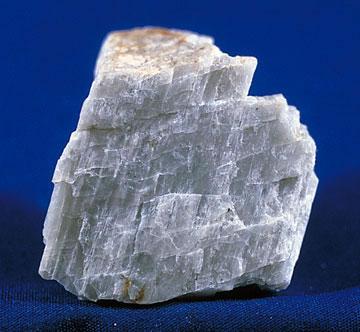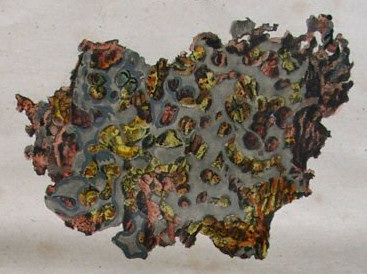|
Mbosi Meteorite
Mbozi is an ungrouped iron meteorite found in Tanzania. It is one of the world's largest meteorites, variously estimated as the fourth-largest to the eighth-largest, it is located near the city of Mbeya in Tanzania's southern highlands. The meteorite is long, high, and weighs an estimated . Discovery and naming Mbosi has been long known to locals, who call it ''kimondo'', yet became known to outsiders only in the 1930s. It is named after Mbozi District, in Mbeya (Tanzania). When it was discovered by scientists in 1930 it didn't have a crater. Mineralogy Mbosi consists of |
Meteoric Iron
Meteoric iron, sometimes meteoritic iron, is a native metal and early-universe protoplanetary-disk remnant found in meteorites and made from the elements iron and nickel, mainly in the form of the mineral phases kamacite and taenite. Meteoric iron makes up the bulk of iron meteorites but is also found in other meteorites. Apart from minor amounts of telluric iron, meteoric iron is the only naturally occurring native metal of the element iron (in metallic form rather than in an ore) on the Earth's surface. Mineralogy The bulk of meteoric iron consists of taenite and kamacite. Taenite is a face-centered cubic and kamacite a body-centered cubic iron-nickel alloy. Meteoric iron can be distinguished from telluric iron by its microstructure and perhaps by its chemical composition also, since meteoritic iron contains more nickel and less carbon. Trace amounts of gallium and germanium in meteoric iron can be used to distinguish different meteorite types. The meteoric iron in ... [...More Info...] [...Related Items...] OR: [Wikipedia] [Google] [Baidu] |
Widmanstätten Pattern
Widmanstätten patterns (), also known as Thomson structures, are figures of long Phase (matter), phases of nickel–iron, found in the octahedrite shapes of iron meteorite crystals and some pallasites. Iron meteorites are very often formed from a single crystal of iron-nickel alloy, or sometimes a number of large crystals that may be many meters in size, and often lack any discernable crystal boundary on the surface. Large crystals are extremely rare in metals, and in meteors they occur from extremely slow cooling from a molten state in the vacuum of space when the Solar System first formed. Once in the solid state, the slow cooling then allows the solid solution to Precipitation (chemistry), precipitate a separate phase that grows within the crystal lattice, which form at very specific angles that are determined by the lattice. In meteors, these interstitial defects can grow large enough to fill the entire crystal with needle or ribbon-like structures easily visible to the ... [...More Info...] [...Related Items...] OR: [Wikipedia] [Google] [Baidu] |
Quartz
Quartz is a hard, crystalline mineral composed of silica (silicon dioxide). The Atom, atoms are linked in a continuous framework of SiO4 silicon–oxygen Tetrahedral molecular geometry, tetrahedra, with each oxygen being shared between two tetrahedra, giving an overall chemical formula of Silicon dioxide, SiO2. Quartz is, therefore, classified structurally as a Silicate mineral#Tectosilicates, framework silicate mineral and compositionally as an oxide mineral. Quartz is the second most abundant mineral in Earth's continental crust, behind feldspar. Quartz exists in two forms, the normal α-quartz and the high-temperature β-quartz, both of which are chiral. The transformation from α-quartz to β-quartz takes place abruptly at . Since the transformation is accompanied by a significant change in volume, it can easily induce microfracturing of ceramics or rocks passing through this temperature threshold. There are many different varieties of quartz, several of which are classifi ... [...More Info...] [...Related Items...] OR: [Wikipedia] [Google] [Baidu] |
Plagioclase
Plagioclase ( ) is a series of Silicate minerals#Tectosilicates, tectosilicate (framework silicate) minerals within the feldspar group. Rather than referring to a particular mineral with a specific chemical composition, plagioclase is a continuous solid solution series, more properly known as the plagioclase feldspar series. This was first shown by the German mineralogist Johann F. C. Hessel, Johann Friedrich Christian Hessel (1796–1872) in 1826. The series ranges from albite to anorthite endmembers (with respective compositions NaAlSi3O8 to CaAl2Si2O8), where sodium and calcium atoms can substitute for each other in the mineral's crystallography, crystal lattice structure. Plagioclase in hand samples is often identified by its polysynthetic crystal twinning or "phonograph record, record-groove" effect. Plagioclase is a major constituent mineral in Earth's crust and is consequently an important diagnostic tool in petrology for identifying the composition, origin and evolutio ... [...More Info...] [...Related Items...] OR: [Wikipedia] [Google] [Baidu] |
Pyroxene
The pyroxenes (commonly abbreviated Px) are a group of important rock-forming inosilicate minerals found in many igneous and metamorphic rocks. Pyroxenes have the general formula , where X represents ions of calcium (Ca), sodium (Na), iron (Fe(II)) or magnesium (Mg) and more rarely zinc, manganese or lithium, and Y represents ions of smaller size, such as chromium (Cr), aluminium (Al), magnesium (Mg), cobalt (Co), manganese (Mn), scandium (Sc), titanium (Ti), vanadium (V) or even iron (Fe(II) or Fe(III)). Although aluminium substitutes extensively for silicon in silicates such as feldspars and amphiboles, the substitution occurs only to a limited extent in most pyroxenes. They share a common structure consisting of single chains of silica tetrahedra. Pyroxenes that crystallize in the monoclinic system are known as clinopyroxenes and those that crystallize in the orthorhombic system are known as orthopyroxenes. The name ''pyroxene'' is derived from the Ancient Greek w ... [...More Info...] [...Related Items...] OR: [Wikipedia] [Google] [Baidu] |
Thin Section
In optical mineralogy and petrography, a thin section (or petrographic thin section) is a thin slice of a rock or mineral sample, prepared in a laboratory, for use with a polarizing petrographic microscope, electron microscope and electron microprobe. A thin sliver of rock is cut from the sample with a diamond saw and ground optically flat. It is then mounted on a glass slide and then ground smooth using progressively finer abrasive grit until the sample is only 30 μm thick. The method uses the Michel-Lévy interference colour chart to determine thickness, typically using quartz as the thickness gauge because it is one of the most abundant minerals. When placed between two polarizing filters set at right angles to each other, the optical properties of the minerals in the thin section alter the colour and intensity of the light as seen by the viewer. As different minerals have different optical properties, most rock forming minerals can be easily identified. Plagioclase ... [...More Info...] [...Related Items...] OR: [Wikipedia] [Google] [Baidu] |
Toshiko Mayeda
Toshiko K. Mayeda (née Kuki) (1923–13 February 2004) was a Japanese American chemist who worked at the Enrico Fermi Institute in the University of Chicago. She worked on climate science and meteorites from 1958 to 2004. Early life and education Toshiko Mayeda was born in Tacoma, Washington. She grew up in Yokkaichi, Mie, and Osaka. When the United States entered World War II after the Japanese attack on Pearl Harbor, she and her father Matsusaburo Kuki were sent to the Tule Lake War Relocation Center. Whilst there she met her future husband, Harry Mayeda. After the war, she graduated with a bachelor's degree in chemistry from the University of Chicago in 1949. Research Mayeda worked initially as a laboratory assistant to Harold Urey at the University of Chicago, where she was hired initially to wash glassware. They used mass spectrometry to measure oxygen isotopes in the shells of marine molluscs which gave information on the prehistoric temperatures of ocean waters and he ... [...More Info...] [...Related Items...] OR: [Wikipedia] [Google] [Baidu] |
Pallasite
The pallasites are a Meteorite classification#Terminology, class of stony–iron meteorite. They are relatively rare, and can be distinguished by the presence of large olivine crystal inclusions in the ferro-nickel matrix. These crystals represent mantle and core material from planetary differentiation, differentiated planetesimals, which were destroyed by violent collisions during the early formation of the Solar System. Structure and composition It consists of centimetre-sized olivine crystals of peridot quality in an iron-nickel Matrix (geology), matrix. Coarser metal areas develop Widmanstätten patterns upon etching. Minor constituents are schreibersite, troilite, chromite, pyroxenes, and phosphates (whitlockite, stanfieldite, farringtonite, and merrillite). Classification and subgroups Using the oxygen isotopic composition, meteoric iron composition and silicate composition pallasites are divided into 4 subgroups:O. Richard Norton. ''The Cambridge encyclopedia of meteori ... [...More Info...] [...Related Items...] OR: [Wikipedia] [Google] [Baidu] |
Eagle Station Grouplet
The Eagle Station group (abbreviated PES – Pallasite Eagle Station) is a set of pallasite meteorite specimen that do not fit into any of the other defined pallasite groups. In meteorite classification, five meteorites have to be found, so they can be defined as their own group. Currently, only five Eagle Station type meteorites have been found, which is just enough for a separate group. Naming and history The Eagle Station group is named after the Eagle Station meteorite, the type specimen of the group. It is in turn named after Eagle Station, Carroll County Kentucky where it was found. Description The Eagle Station group has a composition similar to Main group pallasites. Diagnostic differences are that the olivine is richer in iron and calcium. The group also has a distinct oxygen isotope signature. The meteoric iron is similar to the IIF iron meteorites. This might indicate that Eagle station group and IIF formed close to each other in the solar nebula. Parent body The ... [...More Info...] [...Related Items...] OR: [Wikipedia] [Google] [Baidu] |
IIF Meteorite
IIF may refer to: * IIf (abbreviation for immediate if) and ?:, the inline-if computing function * Indirect immunofluorescence, one of several types of immunofluorescence * Institute of International Finance, an association of international financial institutions * International Indonesia Forum, an organisation which holds annual interdisciplinary seminars in Indonesia. * International Institute of Forecasters The International Institute of Forecasters (IIF) is a non-profit organization focused on improving forecasting research and practice. The IIF was founded in 1981 and is based in Medford, Massachusetts. Publications The IIF publishes the following ..., a nonprofit organization devoted to advancing the science of forecasting * Intuit Interchange Format, a file format used by Intuit's Quickbooks software See also * IFF (other) {{disambig ... [...More Info...] [...Related Items...] OR: [Wikipedia] [Google] [Baidu] |





